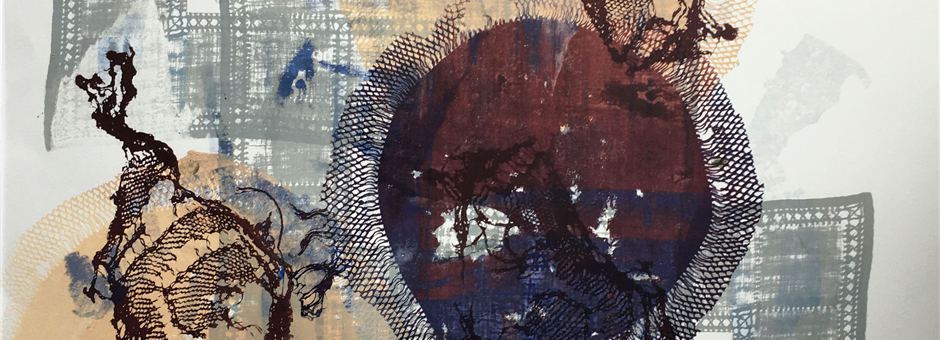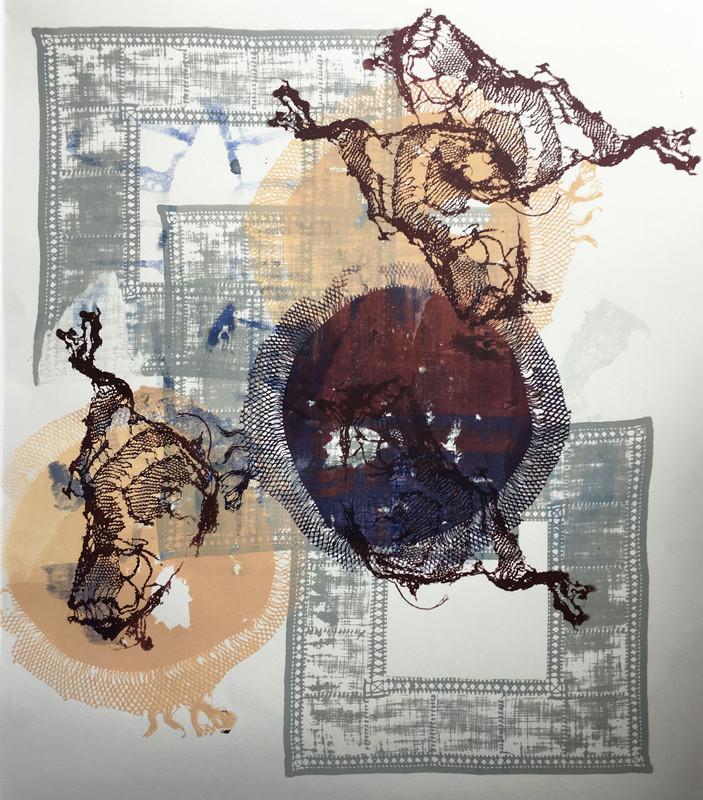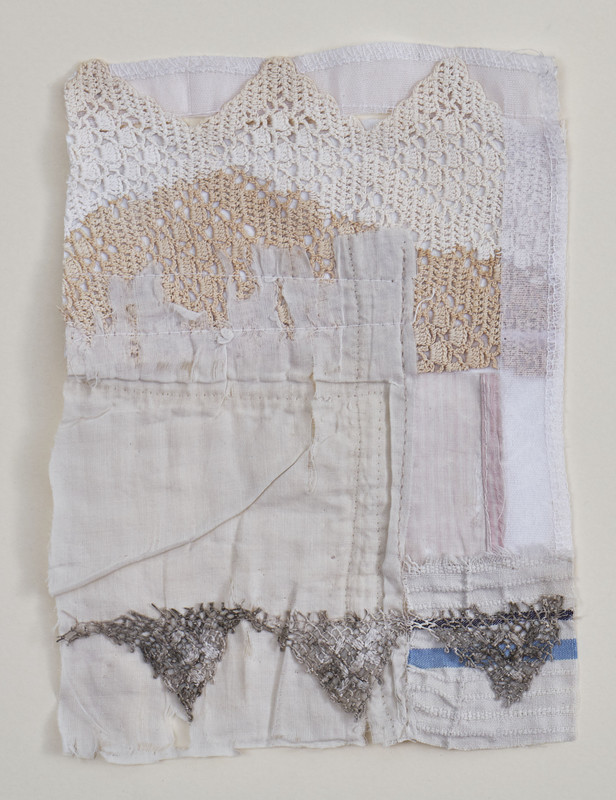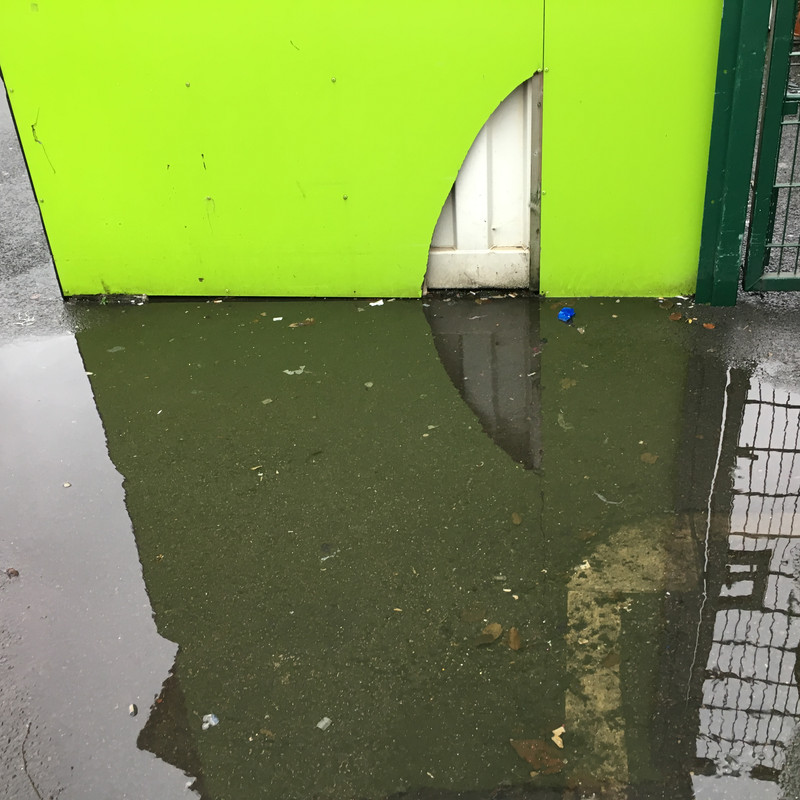
Sarah Feinmann: A Northwest Artist
Sarah Feinmann: A Northwest Artist
Sarah Feinmann: A Northwest Artist
Sarah Feinmann: A Northwest Artist
In the early days of our Look Club, artist Sarah Feinmann was kind enough to come along and spend an evening with us. One of her works was on display in the gallery as part of an exhibition put together by the Whitworth volunteers. Sarah also brought along other pieces of her work and, since then, we have been interested to follow her development. When our Look Club discussed the work of Colombian artist, Doris Salcedo, earlier this year, her use of materials to carry emotional weight was a reminder of Sarah so we are so pleased that Sarah agreed to write about how her practice has developed since we last met her.
"When Tricia invited me to write about my work, she mentioned Doris Salcedo’s work. I found this an interesting connection in that there are common themes within our work. However, where Salcedo’s work is political my work is concerned with the materiality; capturing visceral elements that connect to a place and a moment in time.
In choosing to do an MA in Fine Art at UClan and the Projects for Places Pathway I wanted to contextualise my work and challenge my practice by giving it greater focus. I began working from a dilapidated and derelict building, fascinated by the boarded-up windows and doors. I later realised that this has been an undercurrent throughout my work. I was intrigued by the aesthetics or lack of it, the layers of history and memory, the effects of blanking out and hiding what is behind. There is also the social impact of boarded-up buildings, which in our current climate is becoming more common place with the effects on our society.

Oddments 2020: Sarah Feinmann, Screen Print
The impact of a visit to the Venice Biennale had a significant effect on my work; the wealth of artists and exhibitions as well as the history and dilapidation of the buildings. I took every opportunity to capture bricked up windows, hoardings and grills. I was impressed with Ibrahim Mahama in the Ghanaian pavilion and connected with his use of discarded and repurposed materials. On my return to Manchester I was delighted to find Mahama was exhibiting Whitworth Art Gallery as part of MIF19 and that I was able to hear him speak in “The Parliament of Ghosts”. This led me to discover his stained jute charcoal sack installations, which have in part influenced the fabric assemblages in my MA show.
As I had a solo exhibition coming up at the Roper gallery in Bath in November, I worked throughout the summer, across 2D and 3D, creating pieces that responded to the photographs of Venice. In the exhibition “Overlooked” I exhibited assemblages, collagraphs and embossed printmaking and photography together for the first time. It was a valuable opportunity to see this body of work together.
Mend 2019: Sarah Feinmann, Fabric Assemblage
During lockdown I worked on two projects, one commissioned by the GMCA of my response to the change in my local area and the other involved deconstruct linen doilies, subverting them to create a series of smaller pieces. As part of this I had been burying table linens in the compost, to stain and blemish the fabric. To make the fabric more threadbare I let the worms do the work, as they move through the fabric, holes appear, and the fabric becomes more threadbare. This has become part of my practice and these fragmented pieces are used in the fragment assemblages.
My work takes a cyclical journey with certain underlying themes, found materials, layering, distressed surfaces, traces and trails. I was fascinated by some layered quilt pieces I bought at the antique textiles fair in Manchester which told of a family narrative. From bedding to lace curtains to the most threadbare cotton clothing; separating the layers there were shadows or traces of the original stitch. This led to using found and secondhand table linens that show their history. I’m always looking for new ways to mark or stain the surface, including eco printing, rust printing, compost harvesting, and weathering in the environment. The fabric assemblages evoke the sense of memory and history creating a domestic nostalgic connection to memories of everyday objects, the “bottom drawer” wedding collection and the best tablecloth at family meals.
Crescent 2020: Sarah Feinmann, Digital Photograph
In November last year I was one of 10 artists to be selected for the bOlder Talent Development Award supported by GMCA and Castlefield Gallery. I co-curated tour Instagram online exhibition @tenobstructions. We are now creating work for the Obstructions show at the Castlefield Gallery which begin on 22nd November. Fifteen artists are taking part, ten from bOlder and five younger artists. My obstruction is based on an assemblage I made last year “Venetian Barrier”, based on a boarded-up space with the ends of terracotta pipes, which in a mundane space looked quite decorative. I have been asked to not use the wall for support, but instead, let the artwork stand up for itself. For this piece I wanted to the piece to reflect the domestic nature of my work and it is made up of various found materials from the structure of a house, a broken chair, door panels, skirting board and compost harvested cloth. I found the challenge that these obstructions have provided have been a catalyst to develop my work in new directions and look forward to seeing where this takes me next."
If you want to see more about Sarah's work, you can visit her website and instagram:
http://www.sarahfeinmann.com
https://www.instagram.com/sarahfeinmann/
You can also see her work in the Catalogue for the MA Degree Show at the University of Central Lancashire:
https://virtualdegreeshow.uclan.ac.uk/course/ma-fine-art/
In the early days of our Look Club, artist Sarah Feinmann was kind enough to come along and spend an evening with us. One of her works was on display in the gallery as part of an exhibition put together by the Whitworth volunteers. Sarah also brought along other pieces of her work and, since then, we have been interested to follow her development. When our Look Club discussed the work of Colombian artist, Doris Salcedo, earlier this year, her use of materials to carry emotional weight was a reminder of Sarah so we are so pleased that Sarah agreed to write about how her practice has developed since we last met her.
"When Tricia invited me to write about my work, she mentioned Doris Salcedo’s work. I found this an interesting connection in that there are common themes within our work. However, where Salcedo’s work is political my work is concerned with the materiality; capturing visceral elements that connect to a place and a moment in time.
In choosing to do an MA in Fine Art at UClan and the Projects for Places Pathway I wanted to contextualise my work and challenge my practice by giving it greater focus. I began working from a dilapidated and derelict building, fascinated by the boarded-up windows and doors. I later realised that this has been an undercurrent throughout my work. I was intrigued by the aesthetics or lack of it, the layers of history and memory, the effects of blanking out and hiding what is behind. There is also the social impact of boarded-up buildings, which in our current climate is becoming more common place with the effects on our society.

Oddments 2020: Sarah Feinmann, Screen Print
The impact of a visit to the Venice Biennale had a significant effect on my work; the wealth of artists and exhibitions as well as the history and dilapidation of the buildings. I took every opportunity to capture bricked up windows, hoardings and grills. I was impressed with Ibrahim Mahama in the Ghanaian pavilion and connected with his use of discarded and repurposed materials. On my return to Manchester I was delighted to find Mahama was exhibiting Whitworth Art Gallery as part of MIF19 and that I was able to hear him speak in “The Parliament of Ghosts”. This led me to discover his stained jute charcoal sack installations, which have in part influenced the fabric assemblages in my MA show.
As I had a solo exhibition coming up at the Roper gallery in Bath in November, I worked throughout the summer, across 2D and 3D, creating pieces that responded to the photographs of Venice. In the exhibition “Overlooked” I exhibited assemblages, collagraphs and embossed printmaking and photography together for the first time. It was a valuable opportunity to see this body of work together.
Mend 2019: Sarah Feinmann, Fabric Assemblage
During lockdown I worked on two projects, one commissioned by the GMCA of my response to the change in my local area and the other involved deconstruct linen doilies, subverting them to create a series of smaller pieces. As part of this I had been burying table linens in the compost, to stain and blemish the fabric. To make the fabric more threadbare I let the worms do the work, as they move through the fabric, holes appear, and the fabric becomes more threadbare. This has become part of my practice and these fragmented pieces are used in the fragment assemblages.
My work takes a cyclical journey with certain underlying themes, found materials, layering, distressed surfaces, traces and trails. I was fascinated by some layered quilt pieces I bought at the antique textiles fair in Manchester which told of a family narrative. From bedding to lace curtains to the most threadbare cotton clothing; separating the layers there were shadows or traces of the original stitch. This led to using found and secondhand table linens that show their history. I’m always looking for new ways to mark or stain the surface, including eco printing, rust printing, compost harvesting, and weathering in the environment. The fabric assemblages evoke the sense of memory and history creating a domestic nostalgic connection to memories of everyday objects, the “bottom drawer” wedding collection and the best tablecloth at family meals.
Crescent 2020: Sarah Feinmann, Digital Photograph
In November last year I was one of 10 artists to be selected for the bOlder Talent Development Award supported by GMCA and Castlefield Gallery. I co-curated tour Instagram online exhibition @tenobstructions. We are now creating work for the Obstructions show at the Castlefield Gallery which begin on 22nd November. Fifteen artists are taking part, ten from bOlder and five younger artists. My obstruction is based on an assemblage I made last year “Venetian Barrier”, based on a boarded-up space with the ends of terracotta pipes, which in a mundane space looked quite decorative. I have been asked to not use the wall for support, but instead, let the artwork stand up for itself. For this piece I wanted to the piece to reflect the domestic nature of my work and it is made up of various found materials from the structure of a house, a broken chair, door panels, skirting board and compost harvested cloth. I found the challenge that these obstructions have provided have been a catalyst to develop my work in new directions and look forward to seeing where this takes me next."
If you want to see more about Sarah's work, you can visit her website and instagram:
http://www.sarahfeinmann.com
https://www.instagram.com/sarahfeinmann/
You can also see her work in the Catalogue for the MA Degree Show at the University of Central Lancashire:
https://virtualdegreeshow.uclan.ac.uk/course/ma-fine-art/


Comments & Discussion
No comments to display